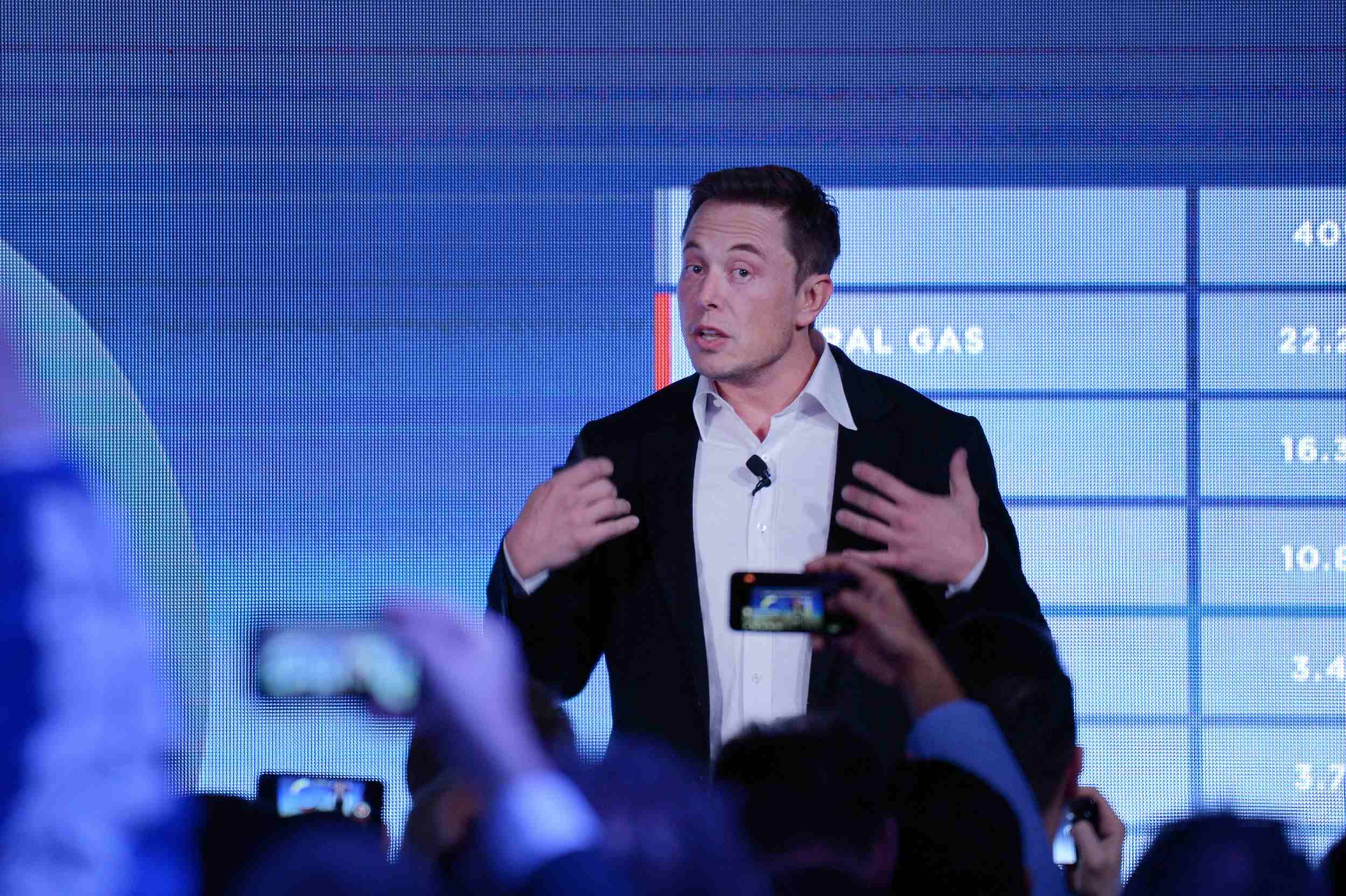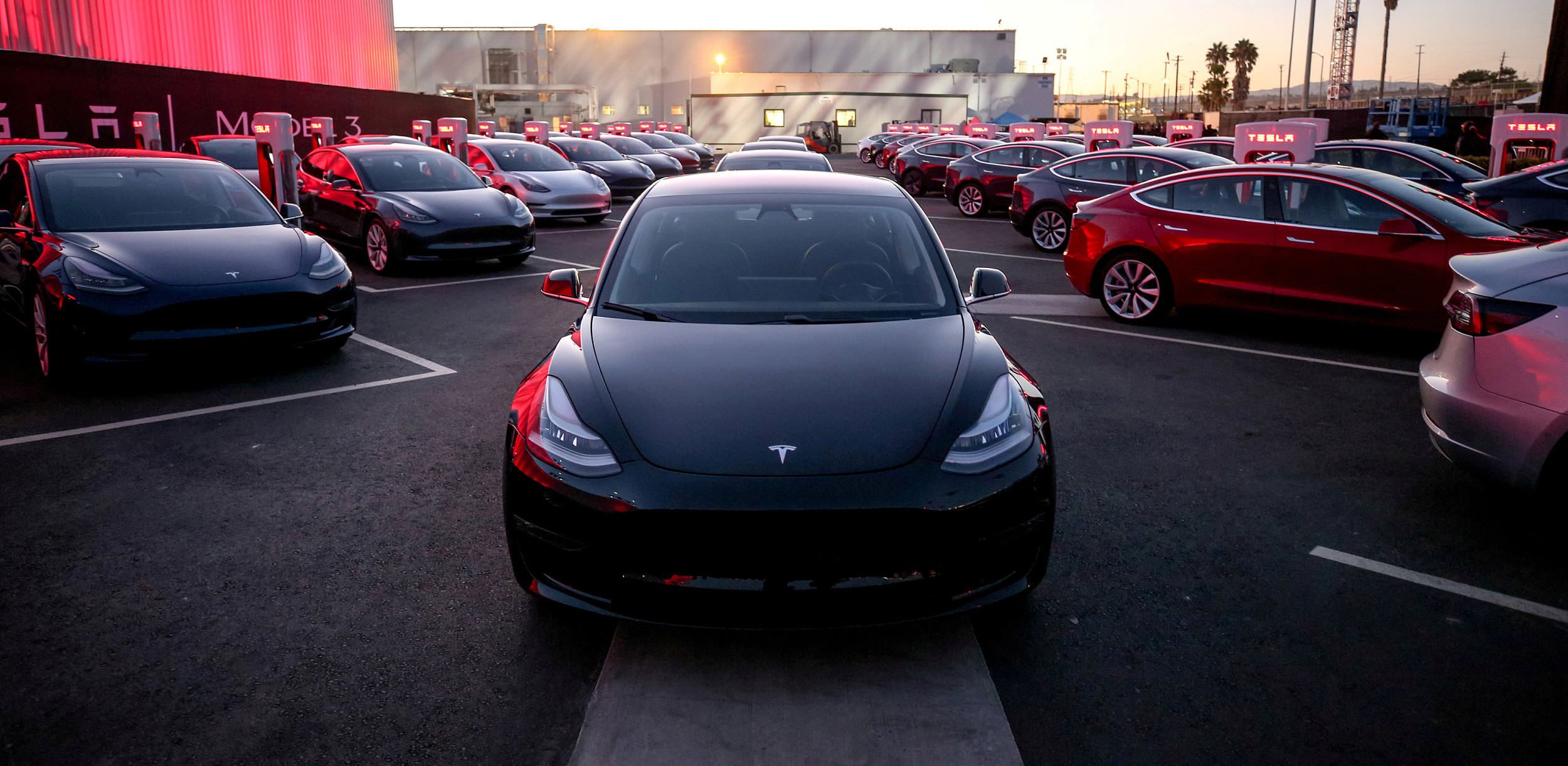
Business
10:15, 02-Nov-2017
Tesla suffers biggest-ever quarterly loss amid Model 3 delays
CGTN

Tesla on Wednesday pushed back its target for volume production on its new Model 3 sedan by about three months, saying it was difficult to predict how long it would take to fix all production bottlenecks.
The company also reported its biggest quarterly loss ever, sending shares down nearly 5 percent after hours as the loss was bigger than analysts had expected.
Tesla, led by Silicon Valley entrepreneur Elon Musk, faces a crucial test in its growth strategy as it ramps up production of the Model 3, its new sedan that starts at 35,000 US dollars, about half the price of its flagship Model S.

Elon Musk, co-founder and chief executive officer of Tesla Inc., speaks during an event at the Hornsdale wind farm, operated by Neoen SAS, near Jamestown, South Australia, Sept. 29, 2017. /VCG Photo
Elon Musk, co-founder and chief executive officer of Tesla Inc., speaks during an event at the Hornsdale wind farm, operated by Neoen SAS, near Jamestown, South Australia, Sept. 29, 2017. /VCG Photo
Although Tesla has made inroads among luxury car buyers with the advanced technology and innovative design in its Model S sedan and Model X SUV, it is the Model 3 on which its long-term viability rests. The company continues to burn through cash, and spent 1.1 billion dollars in capital expenditures in the third quarter.
The company said it now expects to build 5,000 Model 3s per week by late in the first quarter of 2018 from its original target date of December.
Tesla said the main constraint was its battery module assembly line at its Nevada Gigafactory, where the company had to redesign part of the production process.
“I was really depressed about three or four weeks ago,” Musk said, adding that he is now optimistic because it is clear what needs to be done. “We are on it, we’ve got it covered,” but it will take a few months longer than expected, he said.
The Palo Alto, California-based company made just 260 Model 3 sedans in the third quarter due to what it called “production bottlenecks.” It had planned to build more than 1,500.
Model 3 production delays mean postponed sales could exacerbate the company’s cash burn. The problems could also worry the over 500,000 customers who have put down a refundable deposit on the car.
Adding to the pressure is the fact that US tax credits for Tesla buyers, intended to help manufacturers ramp up electric vehicles, begin to expire after the company sells its 200,000th vehicle in the United States. The company has not said when that will be, but it has sold 250,000 globally.
Shares of Tesla have fallen nearly 17 percent from a 12-month high of 385 dollars in September, but are still up 50 percent from January fueled by belief in the long-term prospects of the company.
Tesla’s soaring stock has made the company the second-most valuable US automaker behind General Motors, which had annual net profit of 9.4 billion dollars in 2016.
Largest-ever loss

Tesla Model 3 cars /VCG Photo
Tesla Model 3 cars /VCG Photo
Tesla could face major new requirements for cash given Model 3 problems, a possible factory in China, and plans to develop other vehicles, including an electric heavy duty truck.
But Musk said he did not expect any significant capital expenditures for China until 2019, adding that he envisions a factory producing at least a couple hundred thousand vehicles per year for the Chinese market.
Tesla said it was “well capitalized” for the delayed Model 3 production schedule and predicted capital expenditures of about 1 billion US dollars in the fourth quarter. That, together with spending in the third quarter, matched Tesla’s August estimate of 2 billion US dollars in capital expenditures for the second half of the year.
Tesla reported that cash and cash equivalents rose to 3.53 billion US dollars on September 30 from 3.04 billion US dollars at the end of the second quarter, but Tesla in August raised 1.8 billion US dollars by selling debt. It also spent 325 million US dollars to repay a credit facility in the quarter.
Tesla’s continued need for cash is exacerbated by Musk’s insistence on vertical integration, such as making its own batteries and selling cars directly to customers. That, industry experts say, is among the reasons Tesla is nowhere close to its aggressive goal of building 500,000 vehicles annually by next year, most of them Model 3s.
Tesla posted a net loss of 619.4 million US dollars, or 3.70 US dollars per share, for the third quarter ended September 30 compared with a profit of 21.9 million US dollars, or 14 cents per share, a year earlier.
Revenue rose by 30 percent to 2.98 billion US dollars. Excluding items, the company lost 2.92 US dollars per share.
Tesla warned that its adjusted gross margin would decline to about 15 percent due to a higher mix of lower-margin Model 3 deliveries in the fourth quarter, but then recover in the first quarter of 2018.
Last month, Tesla reported it delivered 26,150 vehicles in the third quarter, a 4.5-percent rise on the same period of 2016.
9554km
Source(s): Reuters

SITEMAP
Copyright © 2018 CGTN. Beijing ICP prepared NO.16065310-3
Copyright © 2018 CGTN. Beijing ICP prepared NO.16065310-3